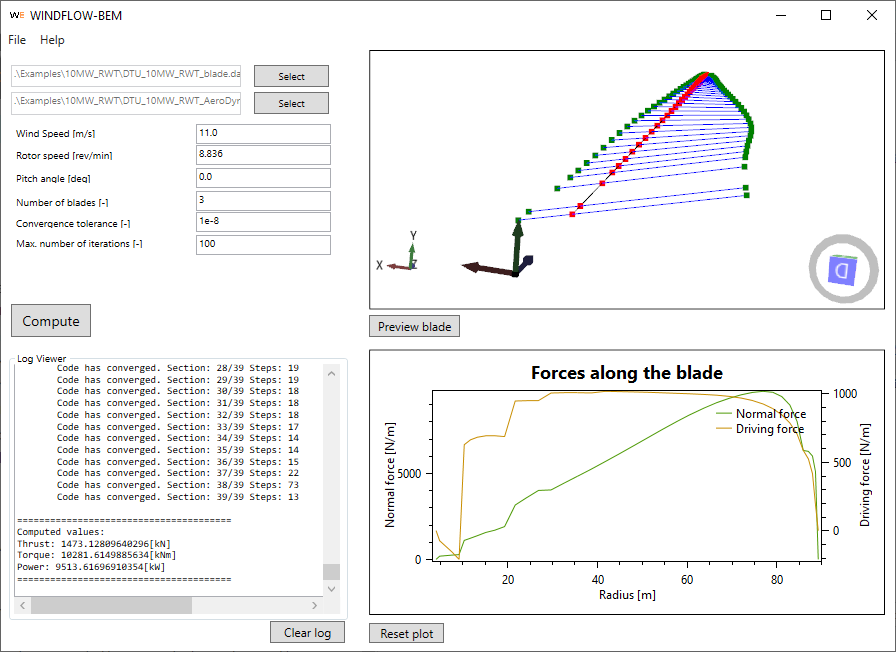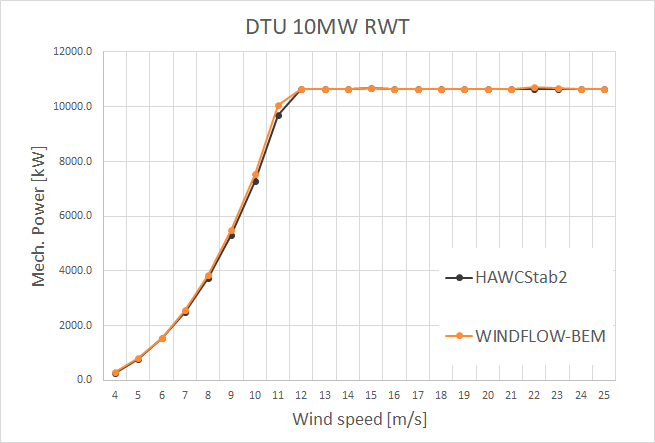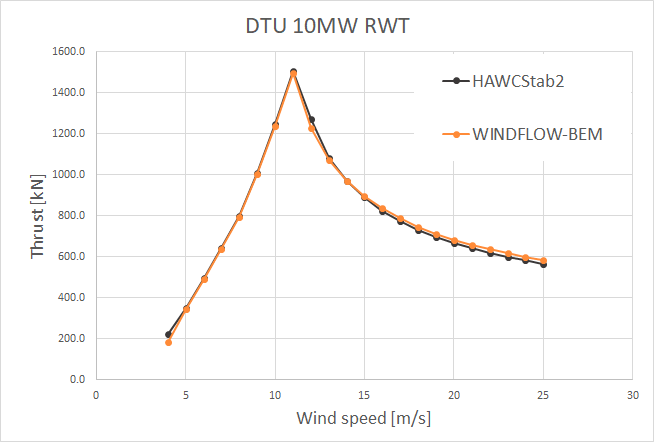WINDFLOW BEM SOLVER
WindFlow BEM is a code with User Interface to perform aerodynamic calculations of horizontal axis wind turbines. It assumes steady aerodynamics and rigid structure. The code is based on Blade Element Momentum (BEM) theory, which combines blade element theory and momentum theory. Blade element theory assumes that blades can be divided into small elements that act independently of adjacent elements and operate aerodynamically as two-dimensional aerofoils. The momentum theory assumes that the loss of pressure or momentum in the rotor plane is caused by the work done by the airflow passing through the rotor. Thus, it is clear that the procedure of BEM solver is iterative, trying to match thrust and induced velocity. The solution procedure of WindFlow BEM is similar to the one employed in FAST, now OpenFAST [1], by NREL.
User Interface of WindFlow BEM takes AeroDyn input files for ease of use. It allows to visualize blade shape in 3D view with chord and twist distributions as provided in the input. It also shows distribution of thrust and driving forces along the blade, once the solution is obtained. The log window allows user to inspect convergence of iterative procedure, and provides total thrust, power, and torque acting on the rotor.
WindFlow BEM main window after solving for DTU 10MW turbine [2] at around rated wind speed.
WindFlow BEM was validated against results of HAWCStab2 by DTU for rigid blades [2]. Comparisons of thrust and mechanical power show good agreement. Predictions of mechanical power with WindFlow BEM seem slightly more optimistic in comparison to HAWCStab2 in before rated wind speed range. Thrust, however, is matched exactly to HAWCStab2 at those wind speeds. Higher power predictions may stem from differences in unsteady aerodynamics. Dynamic stall modelling, for example, that Windflow BEM is not accounting for.
You may request more information and source code using contact form.
[1] OpenFAST Documentation https://openfast.readthedocs.io/en/main/index.html
[2] Bak Ch., Zahle F., Bitsche R., Kim T., Yde A., Henriksen L.C., Hansen M.H., Blasques J.P., Gaunaa M., Natarajan A., The DTU 10-MW Reference Wind Turbine. https://www.hawc2.dk/Download/HAWC2-Model/DTU-10-MW-Reference-Wind-Turbine


